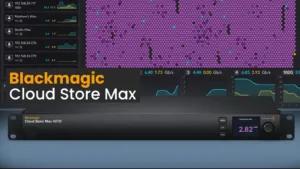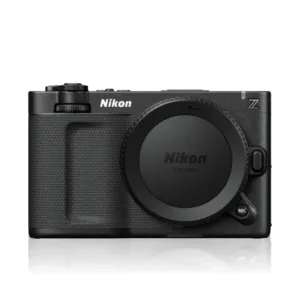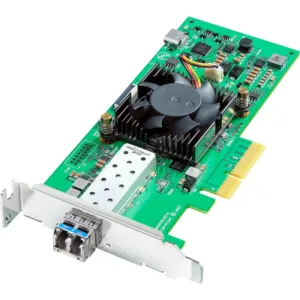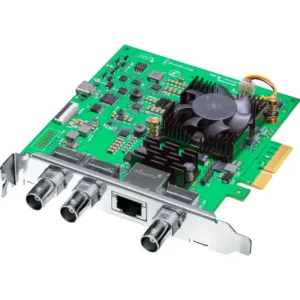Two New Blackmagic Cinema Cameras Are Ready to Revolutionize the Industry
On April 12th, 2024, Blackmagic Design, a pioneering force in the industry, simultaneously unveiled two new lines of cinema cameras, aiming to revolutionize the professional filmmaking landscape. Historically recognized for its switchers, broadcasting cameras, converters, and the renowned DaVinci Resolve video editor, this Australian company made waves in 2002 with the launch of Decklink, the first capture card offering Uncompressed 10-Bit Footage for MacOS.
Blackmagic Design introduced two significant cinema camera lineages, the URSA Cine 12K and the PYXIS 6K, tailored to meet the diverse needs of filmmakers. These two prominent contenders in the market offer filmmakers an extensive range of features and capabilities to cater to their creative aspirations. In this comprehensive comparison, we delve into the technical specifications of both cameras to delineate their distinctions and ascertain which one may be better suited for various filmmaking scenarios. Let’s explore the disparities between these two new titans.

Full Frame Sensor and Resolution:
The disparity between the Blackmagic PYXIS 6K and the Blackmagic URSA Cine 12K is almost negligible. The Blackmagic PYXIS 6K features a full-frame HDR sensor measuring 36mm by 24mm with a built-in Optical Low Pass Filter, while the Blackmagic URSA Cine 12K boasts a Large Format sensor measuring 35.64mm x 23.32mm.
The Blackmagic URSA Cine 12K captures Blackmagic Raw (BRAW) footage in 12K resolution at a 3:2 Open Gate aspect ratio, offering a frame rate of 80 frames per second. Additionally, the URSA Cine provides options for 8K and 4K Open Gate raw recording at frame rates of up to 144 frames per second, all without cropping, thanks to the implementation of in-sensor scaling technology.
One advantageous feature of the 3:2 Open Gate mode is its capacity to fully utilize the sensor’s vertical space when shooting with anamorphic lenses. Moreover, the camera supports various de-squeeze ratios for anamorphic footage, including 1.3, 1.5, 1.6, 1.66, 1.8, and 2x, enhancing flexibility and creative possibilities during shooting.
The Blackmagic PYXIS 6K boasts a resolution of 6048 x 4032 at a 3:2 Open Gate aspect ratio, achieving 36 frames per second. The camera features dual native ISO settings (ISO 400-3200) to ensure excellent low-light performance, with an extended range up to ISO 25,600. Additionally, the PYXIS 6K offers 6K resolution with a 3:2 aspect ratio Open Gate BRAW recording at 30 frames per second. The PYXIS 6K also supports multiple de-squeeze ratios for anamorphic footage, including 1.3, 1.5, 1.6, 1.66, 1.8, and 2x.
Both cameras boast a powerful CMOS sensor, ensuring exceptional image quality and performance.
Dynamic Range and Bit Depth:
The PYXIS 6K offers a dynamic range of 13 stops, whereas the URSA Cine 12K boasts an impressive 16 stops. Both cameras utilize large sensors, enabling them to capture sharp, vibrant footage with ample detail even in low-light conditions. Additionally, both cameras utilize the same codec, resulting in identical bit depth output. Moreover, they support high bit depth recording, ensuring rich and detailed image quality suitable for professional filmmaking.
Mounts and Lenses:
The URSA Cine 12K features an active EF mount, while the PYXIS 6K is available in three different models: EF, PL, and L Mount. However, the URSA Cine 12K offers the option for interchangeable lens mounts, including PL and L mounts.

Recording Formats:
Similar to the URSA Cine 12K, the PYXIS 6K supports recording formats such as Blackmagic RAW, ProRes, and DNx, offering flexibility in post-production workflows. Filmmakers can select the recording format that best suits their specific requirements for image quality and file size.
Capture Type and Storage Media:
The PYXIS 6K is versatile in its media capture capabilities, capable of recording both images and videos. Conversely, the URSA Cine 12K is designed specifically for video recording. The URSA Cine 12K comes with an internal storage solution called the Blackmedia Module 8TB, featuring a single slot dedicated to M.2 SSD. In contrast, the PYXIS 6K offers dual slot CFexpress Type B for storage, along with a USB Type-C 3.1 Gen 1 slot for external storage recording.
Display Features:
Both cameras are equipped with side screens for monitoring shots and controlling settings. The PYXIS 6K features a single 4” LCD capacitive touchscreen with a brightness of 1500 nits and full HD resolution (1920 x 1080p). In comparison, the URSA Cine 12K boasts two monitoring screens and one camera status screen. Both monitoring screens are 5” in size, with full HD resolution and a brightness of 1500 nits.

Power Options:
The URSA Cine 12K supports B-mount batteries and can be powered externally using a 24V DC external power supply with a 100-240V AC input and an 8-pin socket. Conversely, the PYXIS 6K supports BP-U batteries and requires a 12V DC 60W power supply with a 2-pin locking connector for external power.
Price and Overall Value:
When it comes to making decisions, the price and overall value are crucial factors for filmmakers to weigh. While the URSA Cine 12K comes with a higher price tag of AED 60,700, reflecting its advanced features and capabilities, it presents exceptional value for filmmakers prioritizing resolution and image quality. Conversely, the PYXIS 6K offers commendable performance at a more accessible price point of AED 12,125, making it an enticing option for budget-conscious filmmakers who seek quality without breaking the bank.
Conclusion:
In summary, both the Blackmagic Design URSA Cine 12K and the Blackmagic Design PYXIS 6K stand as formidable contenders in the professional cinema camera arena. While the URSA Cine 12K shines in resolution, dynamic range, and connectivity options, the PYXIS 6K delivers impressive performance at a more budget-friendly price. Filmmakers must carefully assess their individual needs and financial considerations when selecting between these two cameras, ensuring they choose the one that best fits their creative aspirations and production requirements.















Add comment